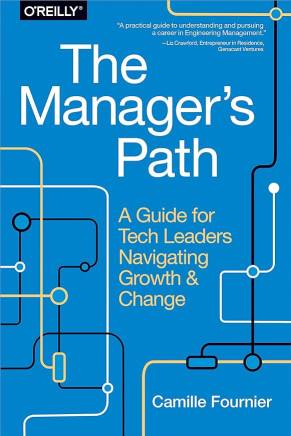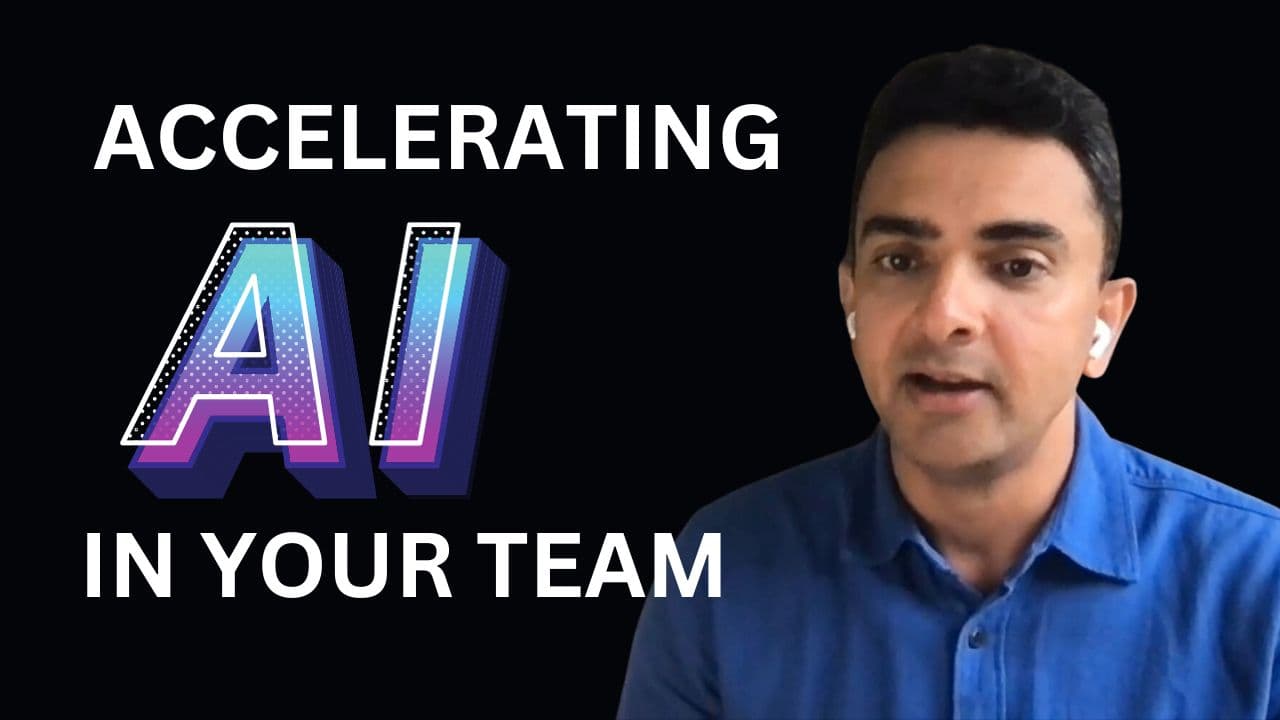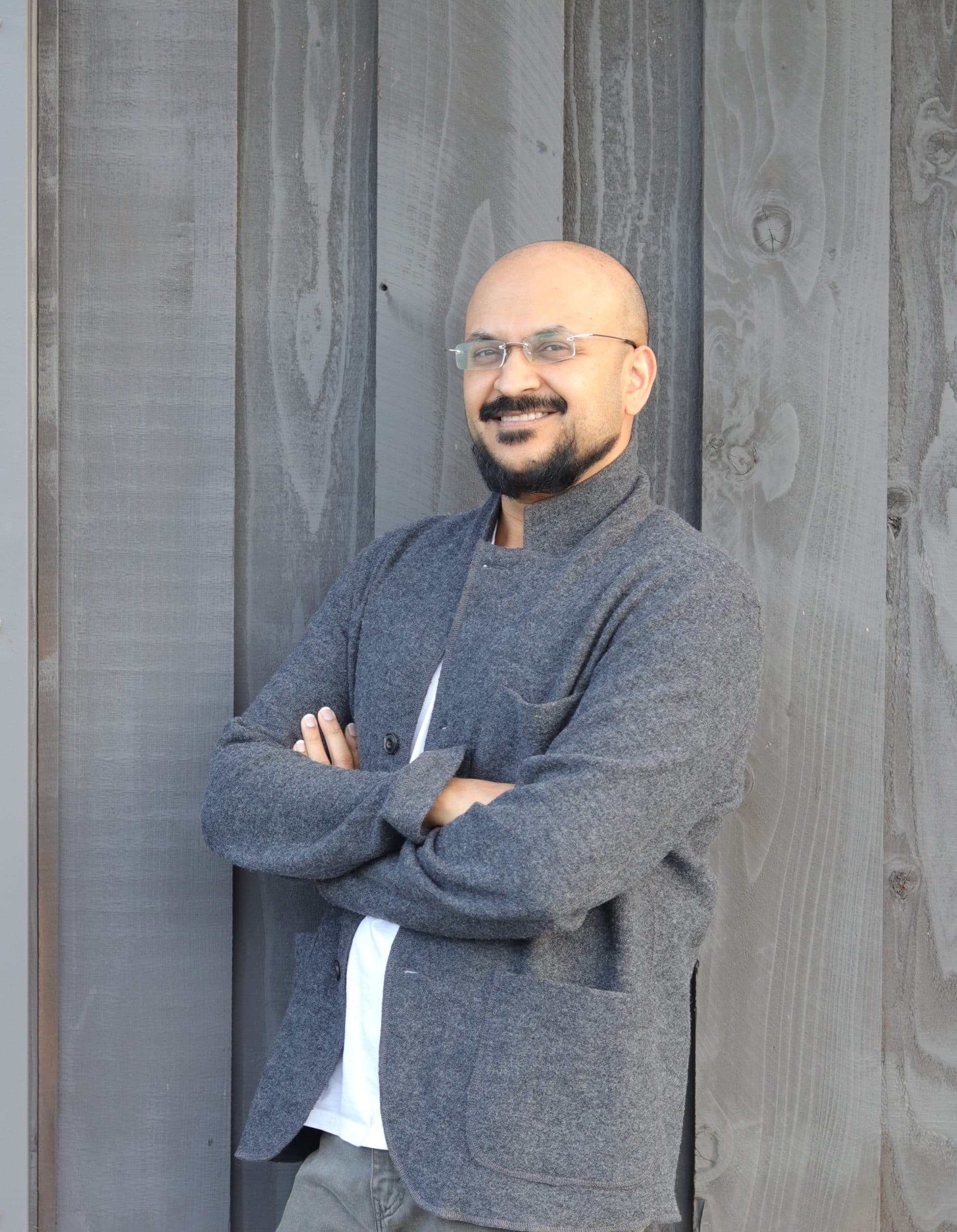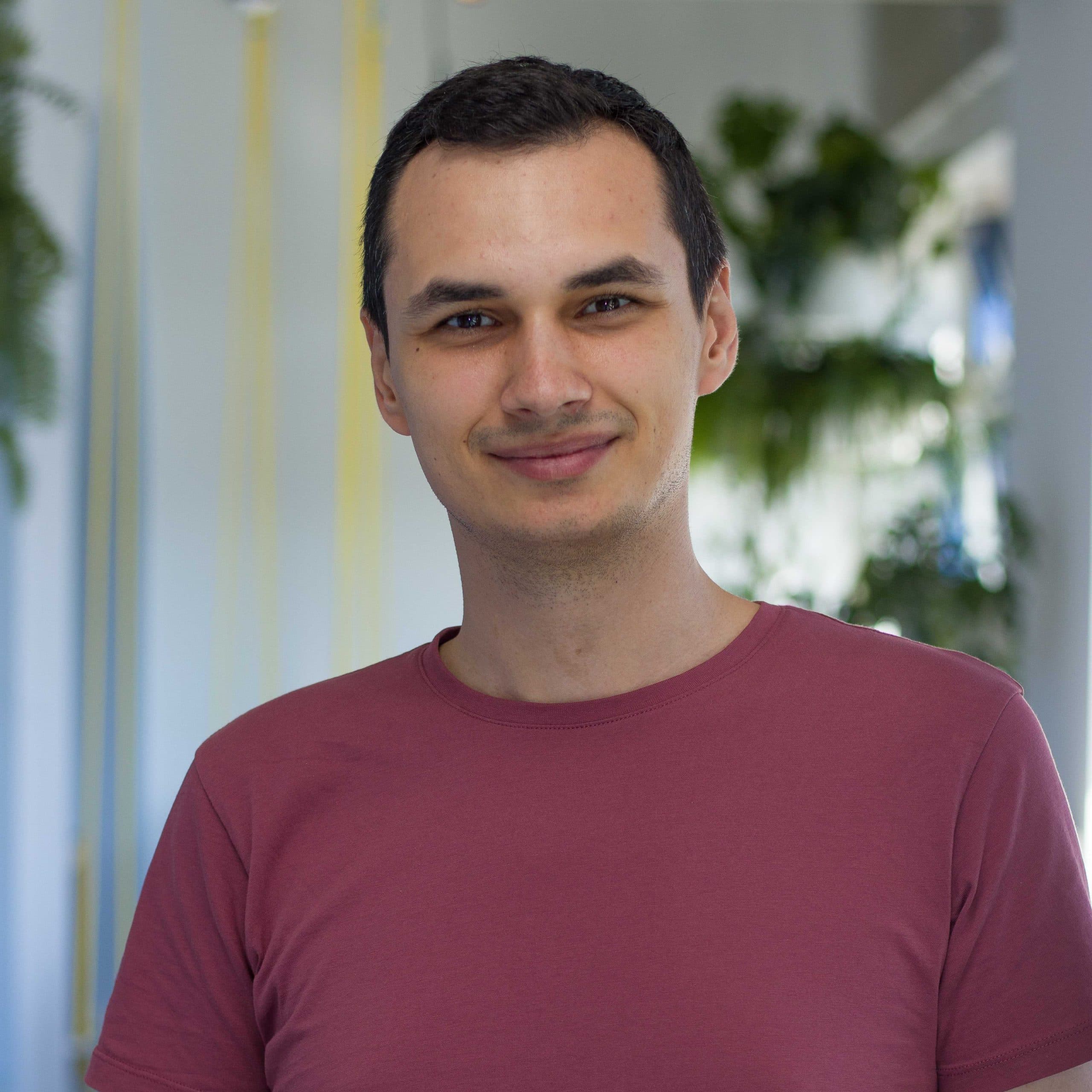Interview with Juan Pablo Buritica Vice President of Engineering at Splice
Published on Jun 16, 2019
20 min read

Vidal: Well, thanks. Good morning, Juan Pablo. Thank you so much for speaking to me today.
JUAN PABLO: Morning, Vidal. How are you?
Vidal: I’m great, thanks. Could you maybe start, maybe tell people a little about your current role and where you’re located?
JUAN PABLO: Sure. I live in New York City. I moved here from Colombia about 10 years ago. I’m currently the VP of Engineering at a company called Splice, which we like to say we’re a music company with a technology team. We build tools, software, and services for musicians and music producers.
Table of Contents
Toggle
- What’s your background and how did you get into management?
- What are the biggest challenges you face?
- What are your thoughts on diversity?
- What is your approach to hiring?
- What’s your advice for managers who are just starting out?
- What’s your workday like and how do you manage your time, emails, etc.?
- What’s a personal habit that contributes to your success?
- Share an internet resource or tool that you can’t live without.
- If you could recommend one book to managers, what would it be and why?
- What is your approach to mentoring and coaching members of your team?
- Where can we go to learn more about you?
What’s your background and how did you get into management?
Vidal: All right. I know you have a little bit of an unusual background. Could you share with people your background, and how you got into management?
JUAN PABLO: Sure. Yes, it is more unusual than it tends to be. I do not have any formal Computer Science training, other than when I got my computer at 13 and started discovering the phreaking books, and the hacking books, and the [inaudible 00:01:05] books, and just playing around with those. I pursued a career in Pharmacy, in Pharmaceutical Chemistry and when I was … I think I was 23, I moved to the States to finish my degree in Pharmacy, it was around the time where the economy went crashing.
JUAN PABLO: I had to make a living, so I had dabbled in the culinary arts. I have a diploma in World Cuisine. I went back to the kitchen. I led the kitchen for an Italian restaurant, about 15 people, in Fort Lauderdale for a while, until the real state crisis also crashed us. And then, had to find a way to pay rent. So, I ended up making websites for people. I had already built a couple of Myspace pages and dabbled in HTML and CSS because I had a band back home. This allowed me to start paying the bills and I discovered there was a tech industry. I joined a startup in Miami, which was my first startup experience. It was a long distance startup. We offered free long distance in exchange of hearing ads and that was tailored towards Latin America immigrants, mostly.
Vidal: Got it.
JUAN PABLO: From there, I discovered an actual industry and realized that Florida wasn’t necessarily a center for technology, so I moved to New York. Since then, I’ve worked for a comic startup, for a advertising and publishing startup, for a ride-sharing startup and lately a music startup. In addition to that, around halfway through my tech career I kept bumping into leadership positions without really wanting them. As being someone who liked to be in the back of the house, the kitchen, I really didn’t … I like to say I didn’t like people, but it wasn’t the case. I wasn’t seeking to be in charge, but I kept running into those opportunities.
JUAN PABLO: I think when I was at Onswipe, which was this publishing startup, I embraced leadership. I said, “Okay, I keep finding myself here. This means something, I’m going to take these roles and I have to learn about it.” And that’s when I switched careers and took my management position as a … I saw myself as a junior manager and I started trying to see who I could learn from and how I could learn from, the same way I already learned JavaScript.
What are the biggest challenges you face?
Vidal: Okay. That’s really inspiring, the way you came basically from being a chef to VP of engineering now in Splice. I saw your talk at CodeClimate recently. You were talking about using data and all data. But I wonder if you could share what are your biggest challenges? What are the biggest challenges you face as an engineering leader?
JUAN PABLO: Cool. I think you and I have talked a couple of times.
Vidal: Yeah.
JUAN PABLO: Pretty cool. Because every time I have new challenges, I tell you about, which is really great.
Vidal: Great.
JUAN PABLO: I’ve had two big challenges at Splice, I’d say. And I do mention those on the talk. The first one was scaling the team. I joined late 2016, they start up at 15 people, about 6 engineers. With the original intent of scaling the team not that much, I remember talking to Matt Aimonetti who is the co-founding CTO and who’s my boss. He was like, “Look, we’re not planning on growing super fast. We want to be profitable in the next two quarters. We’re going to take it easy.” At that time, that wasn’t as exciting. It was exciting to be in a music company, it wasn’t as exciting in a company that wasn’t going to grow fast, because I had just come from a fast-growing company, but I still saw it as a really interesting challenge because we also wanted to go the distributed team. And I’ve been building distributed teams for a while, so that is really exciting to be able to do that kind of …
JUAN PABLO: Very shortly thereafter, around a quarter or so, we saw that our business was starting to pick up. Our revenue was starting to grow significantly. And so, we found ourselves making the decision on whether we really wanted to take it easy or if we wanted to try take the opportunity of having a broader impact in music. And so we did, around that time I think we closed around 35 million dollars and we were off to the races.
JUAN PABLO: Scaling the team was my first really tough challenge. I think we grew from six to about 55 engineers in the first 18 months without HR, without recruiting, in a distributed fashion. That was …
Vidal: That’s impressive.
JUAN PABLO: It was fun. That was the first biggest challenge we had at Splice. And then I had to figure out … every three months I had a new job. Was bringing in managers first, then helping them scale the recruiting operations, also onboard people, also try to give them context into all the stuff that we had built. The early engineering team at Splice was very prolific, built many, many systems and we had to, little by little, rediscover them. That was fun.
JUAN PABLO: The second challenge, and what I’m still … probably say not out of the woods yet, but still a challenge I think about is how to accelerate the output of my team without burning people up, without working weekends, and late nights, and doing it as a unsustainable pace. The talk you mentioned covered a little bit of that, but basically around June last year we were slow. Things felt slow.
JUAN PABLO: We weren’t being able to get engineering work out, completed work, fast enough. And it wasn’t because we weren’t working hard. The processes that we had scaled on top of were no longer working. We had a single staging environment, for example, and that environment worked when we were five people. But when you have 40 engineers trying to stage their work at the same time, and then you want the QA group to review the work, when you want product or design to give their input on staging, then you have a traffic control problem. And that backs up.
JUAN PABLO: Biggest challenge for the last eight months, at least, has been trying to find the right way to move the team forward and I think we’ve hit a good strike lately. So, we found some research, primarily in a book called Accelerate Nicole, Gene, and Jez, I’m going to say. We also found a few tools like CodeClimate Velocity that helped us understand our cycle time, for example. And it set some metrics. As an engineering organization that we want to target and drive time to merge or mean time to restore, and just moving 70+ technology organization forward has been probably the hardest work I’ve done in my career in tech, but it’s also been very rewarding.
What are your thoughts on diversity?
Vidal: All right. Yeah, I’ll include a link to that talk, it was really great what you’re doing with metrics. So, this is kind of a good segue into my next question for you. What is your approach to hiring, I know you had to hire a lot of people, but I know also you’re a big advocate of diversity. And so, a lot of engineering managers struggle with diversity, I’d just love to hear your approach to hiring and say a little bit about diversity.
JUAN PABLO: Sure. As I joined a music company, my biggest fear is always having a team that is not representative of the people who are going to be affected or consume the product. I think that’s a big challenge we have in technology. And to me, that’s the ultimate goal of diversity. It’s not just to have people who come from different backgrounds or who look different in the room, it’s also to get representation in the room. There’s multiple lines of representation, you have gender, you have race, you have socioeconomic backgrounds, many, many things. I think a non-controversial example of the impact that having diverse voices in the room is what happened at Splice early on. Splice was primarily focused towards EDM, and electronic music producers, so it’s not … you know me, I like heavy metal, hardcore punk, so I didn’t really relate to the product very early on, but there was one time where I asked Bret, who ran the artists group, and I asked him, “Do you know if this band called We Came As Romans uses Splice?” He was like, “No, but I’ll check it out.”
JUAN PABLO: And eventually we found out that this band had been one of the earliest users of Splice. They’d been using all of our products, our samples, backup, plugins, and it gave me a completely different perspective of our product because then I could relate to the same music that I like. And not only that, Kyle became a really big advocate of Splice and Kyle, who is their [inaudible 00:12:35]. They were going to record a pack with us, they spoke to our investors in why Splice wasn’t necessarily tailored towards electronic music. That was a huge impact, if I wouldn’t have been in the room, that would’ve never happened.
JUAN PABLO: So that is a little bit about why I care about diversity across all board, it’s an example that’s not necessarily around identity. Now, I wanted a team that could represent in the product, in the technology, as much as I could. That’s why, to me, at least, diversity and inclusion matters. Of course, then you have all the … diverse teams have better business outcomes and all of those things, which are real, but the reason why I care is because of representation.
Vidal: That totally makes sense, yes, in your industry especially.
JUAN PABLO: Yeah.
What is your approach to hiring?
Vidal: Could you talk a little bit about hiring and your approach to hiring? I think you have a pretty good process for that, and you had to hire a lot of people quickly and all that.
JUAN PABLO: Right, yeah. I was about to deal with that. The challenge of trying to build an engineering team that was broadly representative was pretty fun. And we did in a couple of ways. The first thing we did was design a hiring process that could remove as much bias as possible. Take old tests with a very specific rubric instead of white-boarding or real-time challenges where some people may not be as comfortable as others. If English is not your native speaking language, then you’re already a step behind if you want to do an interview, or white-boarding. There’s a few of these.
Vidal: Makes sense.
JUAN PABLO: I don’t think there’s any perfect interview process, but we try to at least focus mostly on the things we wanted to filter out or in. We made sure all the interviews were in pairs. We would always get two perspectives of the same data point. And we started making sure that we wouldn’t necessarily only look for people who are looking for a job. The biggest challenge when you talk about the pipeline … it takes a lot of effort from engineering managers and engineering leaders to go and look up for the people who you want to work with. And convince them not only that this is a good opportunity, but this is a safe space, or a good place to work. That they will have the support to advance, to have input in the product, to actually being impactful in that taking the risk of leaving their current job and joining another company is worth it. And that doesn’t happen in job postings. You cannot communicate that in job postings. And you can’t necessarily communicate that through recruiters, which is why the first 35 folks who joined Splice were directly … I was directly involved in first 30 folks if I’m not wrong.
JUAN PABLO: And the next 20 or something were my managers. But that was the job. It was my role as head of engineering was to do this diversity advocate work, to convince people … convincing the first woman that they should take a step to join a team that was primarily men was my responsibility. And it was my responsibility to ensure that they would feel comfortable. Not only comfortable, that they would have a huge impact and they would be software engineers who just happen to be Hispanic, or non-male, or … that they would be software engineer and that was the primary of all. They weren’t here to be diversity advocates as well. That had a pretty good effect.
JUAN PABLO: There’s a tweet around the time we were hiring. Someone said, “I don’t know Splice or Microsoft are doing, but seems they’re doing things right, bringing the right people in.” That was a good signal, that we were creating the right space for very talented engineers to thrive and to join us. And it just created a cycle. I like saying that hiring teams is a little bit like building your credit score.
JUAN PABLO: If you don’t have a good credit, and it’s really hard for you to get a loan, and there’s this cycle, especially as an immigrant. When you come in, you’re 24 and you try to get a credit card, and it’s like, “Oh, you don’t have a credit score.” “But how do I get a credit score?” “Well, you need a credit card”, “Okay, how are you going to help me?” Especially in the financial crisis, you couldn’t even get sponsored credit cards. It’s a nightmare so that is how I relate.
JUAN PABLO: In this case, I loaned my credit to my team. I’ve had already, the work that I’ve done through open-source communities and building communities in Latin America had already given me some credibility around building teams, and building good collaborative spaces. So, I allowed to loan the company some of that credibility and to bring folks in my network who were also identifying as folks who were not only great engineers, but also good advocates for people.
Vidal: That’s a great analogy and a great insight. But yeah, you have to make it a place that people want to come and they’ll know they’ll be successful if they come there. Yes, they’re diverse hires, but is this a place where they can succeed and be set up for success.
JUAN PABLO: Right.
What’s your advice for managers who are just starting out?
Vidal: So, I think that’s awesome. I want to move to another topic. Could you share your advice for managers who are just starting out?
JUAN PABLO: Managers who are starting out. Yes.
Vidal: New managers.
JUAN PABLO: New managers. If I were a new manager again, I would really, really want to understand that the context in which organizations establish process and whatever matters a lot more than you’d think. Me telling you how I built a team of 15 engineers doesn’t necessarily apply to your company the same way because you may be in different industry, you may be in a different city, you may have a different financial requirements. And we have this tendency in the tech industry, “Oh, this big company did this, so I’m going to do it.” We ignore the context. For example, I heard from a startup not too long, three years ago … had a new manager who said, “Look, my boss have a brand VP of engineering and he says that we need to move to the monorepo because Facebook has one.”
Vidal: Okay.
JUAN PABLO: And I asked them, “Okay, cool. Do you have the same budget to manage the monorepo in the same way as Facebook does?”, “No, of course not.” Then, that is one reason why not to do it. That happens across the board. It’s really great that we’re embracing engineering management as an industry. Finally, I think there’s been a turnover over the past few years. We moved from really aggressive holocracy and we don’t need bosses, and all these things to … management is important, management matters. And we have great books like Camille’s, The Manager’s Path. And I think Lara Hogan is just about to publish Resilient Management. We have a few really good books that are not necessarily just engineering management books, which is great, management books, but what we need to understand with all those is that the context matters a lot. How much support you have? How big your organization is? How much time do you really have to implement all these process changes or not. Also, your ability to communicate matters a lot. There’s some people who are really, really good at running one-on-ones. There are some people who aren’t and then we need to find tools, or find different avenues to sort of enhance ourselves to become great managers. That would be my advice.
What’s your workday like and how do you manage your time, emails, etc.?
Vidal: I think that’s great. I was thinking of this concept of cargo culting where people copy things without understanding the reason why when you were describing that example. Time management is a huge issue for engineering managers, I find. There are so many things to do, so many demands, if you could share what is your workday like and how do you manage your time, meetings, emails, all the stuff you’ve got to do?
JUAN PABLO: Cool, yes. Time management is a thing. My calendar changes about every three months. I refactor. I do refactor my calendar. And I try to do it … sorry, I try to organize my time in themes. At the moment, all my teams run iterations at the same time. They’re all synchronized. They didn’t use to be, but now they are. We’ve got to this stage as a company where I didn’t know when my teams were doing what. So, it became hard for me, and hard for the organization, to understand this. We chose to synchronize and we did that at the beginning of the year. It made my organization a lot more observable for example.
JUAN PABLO: And now, my calendar is organized a little bit around that schedule. Mondays, teams start their iterations and those Mondays that they start iterations I have a pretty clear Monday. But the other Monday we do product reviews. Chief Product Officer, VP of Product, myself, we meet with the leadership of all the product teams and we try to understand … it’s a mix of strategy and execution meeting. We try to understand what their challenges are, what decisions they need made, try to unblock. That’s sort of the theme of those days. Tuesdays is executive day. Have two-hour executive meeting. I have a technology exec meeting with some of my peers and CEO. And also, some product reviews. Wednesdays is no-meeting Wednesdays for the entire engineering organization. You block our calendar, we protect our focus, it’s not forbidden to me, but we encourage to protect focus there. I do tend to take meetings outside of Splice.
JUAN PABLO: Thursdays and Fridays become one-on-one days. Those are the days where I meet with my reports for an hour or so, to try and make sure I can unblock them, I can support them. Little by little, as I’ve scaled the organization I’ve had to move from being a person that actually supports his reports to a person that is supported by his reports. Doing that flip is now I push work down rather than when I was an engineering manager and I was there for my team. Now my team is for me. I just push work on them, it’s a different dynamic.
JUAN PABLO: That’s a little bit about of how my schedule goes. I start my days with my email, I end my days with my email. I don’t look at that much code anymore, but I do get involved in some code reviews to pull requests that are outgoing, mostly the ones that are controversial. And then, what else? Say probably the most important meeting I run is my engineering leadership meeting where I have engineering managers, my engineer director of production engineering and the software architecture group, and we meet every week to evaluate our challenges as an organization, to see what we can move forward.
JUAN PABLO: It’s also my favorite meeting, it’s like my staff meeting, but I have ICs in leadership as well. It’s pretty cool.
What’s a personal habit that contributes to your success?
Vidal: That’s great, thanks for sharing that detail about how you break things out into these themes and days. Could you share, moving on, a personal habit that you feel contributes to your success?
JUAN PABLO: I’m terrible at habits. I’m terrible. I really am. Now that I just traveled, my habits get destroyed. I build these routines when I’m here in New York, and anytime I travel they all just break down. So, I wouldn’t say … I’d probably say that the habit of disagreeing with authority-
Vidal: Yes, you’ve mentioned this.
JUAN PABLO: Has helped, being very punk has helped me. It’s also gotten me into a lot of trouble, but I would say that the habit of not taking authority for granted has probably helped me the most.
Share an internet resource or tool that you can’t live without.
Vidal: All right, that’s great. Could you share an internet resource or tool, app, something that you can’t live without, that helps you at work?
JUAN PABLO: I recruited a really large amount of my team through Twitter, so I’m going to say Twitter is right up there.
Vidal: Okay.
JUAN PABLO: But let’s see … I think in the past we’ve talked about this, I’ve never been able to even come up with one. Okay, yes. Notion.
Vidal: Notion, yes.
JUAN PABLO: Notion is a tool I cannot live without now. It’s great for organizing notes. I can write my notes, my talks, my outlines, my meetings in Notion and markdown. I run all my meeting agendas in Notion, I have a separate board for every one of my one-on-ones. The day before, people throw in items into those boards and then we catch up on them during our meeting. So, I’d say Notion.
Vidal: All right, that’s great. I’ ll have to try it out. You’re huge on Twitter. You have a big following on Twitter.
JUAN PABLO: I spend too much on it.
If you could recommend one book to managers, what would it be and why?
Vidal: you kind of mentioned some earlier, but if you could recommend just one book to managers, what would it be and why?
JUAN PABLO: Now I’m going to recommend two. Yes, I did mention one, but I’m going to recommend two.
Vidal: Sure.
JUAN PABLO: The first one is The Manager’s Path, by Camille Fournier. And the second one is Accelerate by Nicole, Gene, and Jez.
What is your approach to mentoring and coaching members of your team?
Vidal: All right, last real question here. What is your approach to mentoring and coaching members of your team?
JUAN PABLO: All right. I try to stay away from mentorship unless explicitly requested. My team, for example, is almost half … almost half of my team are not men and I think mentorship in that scenario where I haven’t lived their experiences gets a little bit tricky. I’m a little bit more fan of sponsorship. Giving them tools, giving them opportunities, giving them … and when explicitly requested advice, then advice. Or feedback. But I’m more of a fan of throwing people into the deep end of the pool and making sure that they won’t drown.
JUAN PABLO: Many of my reports will tell you that I’m not as hands-on, I’m a little bit more hands-off. “Look, here’s a big problem, ambiguous and all, that I know you can solve, so here you go. Tell me how you’re going to do it.” The one thing that you should know, that I’m not going to let you fail. If we fail, I fail, but if we succeed, then you succeed [inaudible 00:31:24], right? That tends to be my approach. For coaching, if we talk a little bit more about coaching, then helping people think through challenges or thinking through how to approach, or how to connect people, then that’s … I like to tell my team that I probably don’t know how to solve their problem, but I definitely know someone who has solved it. And I connect with them. And I think my best tools as an engineering leader has been the network I’ve built, because I can always put people in touch with someone who has had to scale databases to ridiculous sizes and production, or to someone who’s had to, I don’t know, security incident. I can probably connect my team with anyone they need.
Vidal: All right. Juan Pablo, you have been super generous with your time. I really appreciate it. You’ve been awesome. A lot of the stuff you shared, I think people are going to find super, super valuable. So, I want to thank you for that. Maybe you could just share at the end, where could people go to learn more about you. If they want to follow you, or just learn more about your stuff.
Where can we go to learn more about you?
JUAN PABLO: Sure. You can find me on Twitter @buritica, and also my website is buriti.ca. It’s my last name. It’s an indigenous Colombian last name, which is hard to pronounce in Spanish and in English, but I love it. Yeah, I say a lot of stupid stuff online, sometimes something that’s worth it. So, if you want to hear that out, then follow me on Twitter. Thank you.
Vidal: Will do. Thank you again, so much, really appreciate it.







